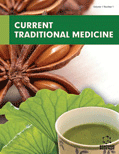Abstract
Sida cordifolia (Malvaceae) is a highly reputable medicinal herb in the Ayurveda and other traditional systems of medicine in India and various other countries. In the Ayurvedic system of medicine it is used as antirheumatic, analgesic, antipyretic, antiasthmatic, nasal anticongestant, antiviral, laxative, diuretic, aphrodisiac, hypoglycaemic, hepatoprotective and in the treatment of Parkinson’s disease. In order to evaluate this traditional plant in a modern perspective, the current review presents essential aspects of S. cordifolia including taxonomy, uses in disciplined traditional medicines, geographical distribution, chemical constituents, pharmacological studies on plant extracts and on single entity constituents, toxicity, and standardization. The chemical composition of this herb comprises of alkaloids, flavonoids, phytoecdysteroids, sterols and fatty acids. The problem of plant misidentification, due to confusion with other related species, is discussed. This paper reviews the conflicting reports regarding the presence or absence of ephedrine and discusses the claimed utility of this herb as a weight loss aid on the basis of ephedrine purported to be present in this species.
Keywords: Ayurvedic medicine, Bala, chemistry, pharmacology, review, Sida cordifolia.
Graphical Abstract































